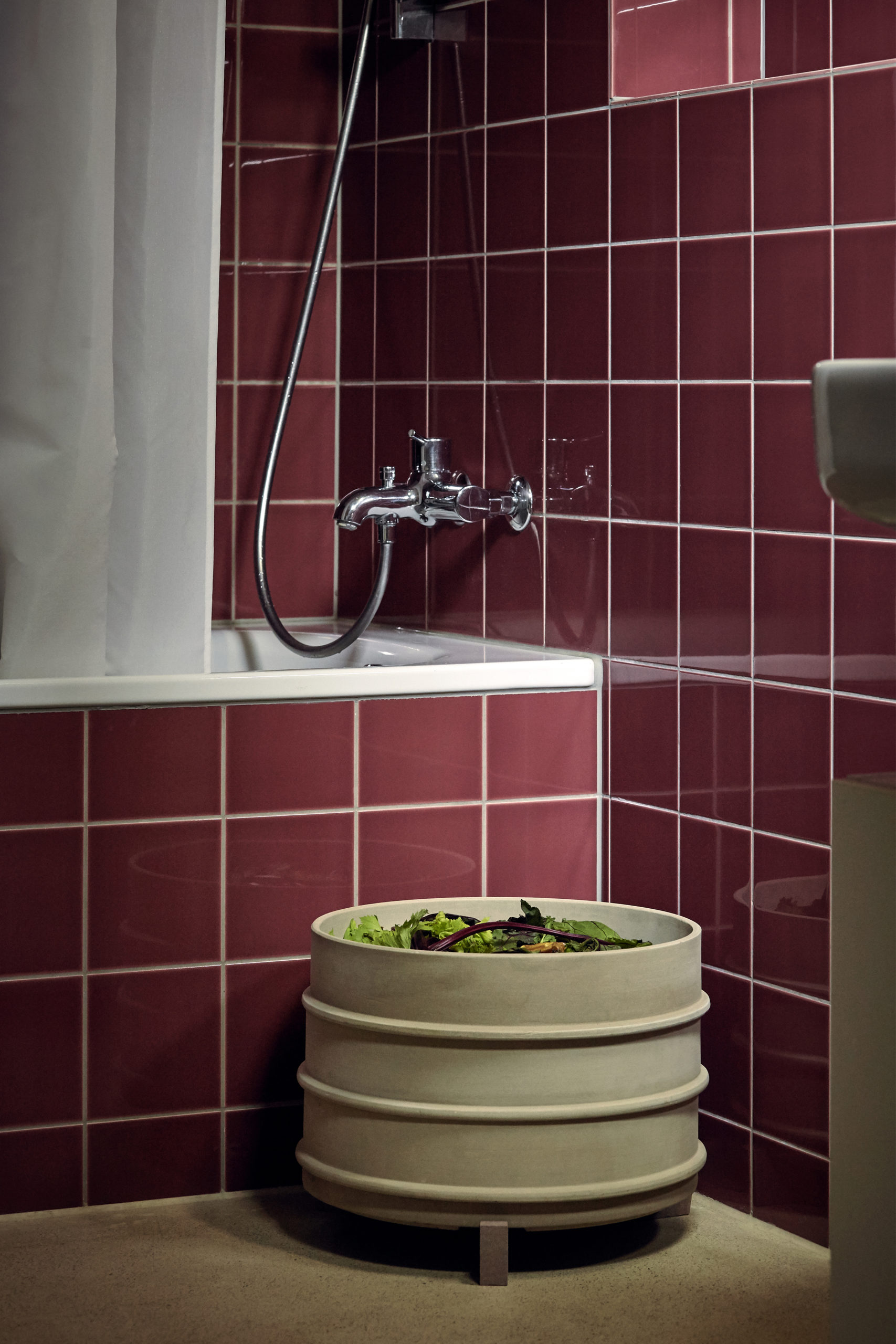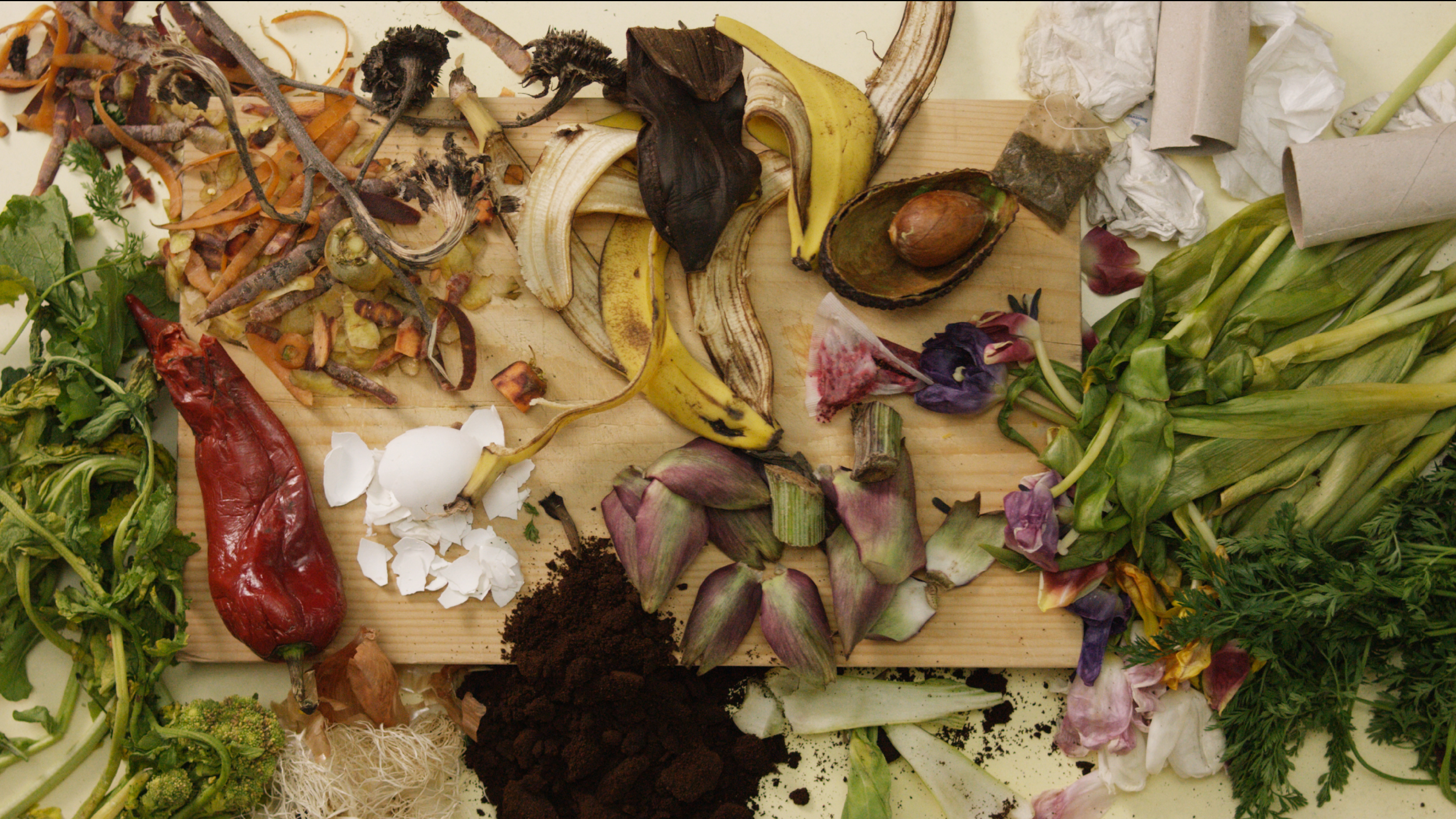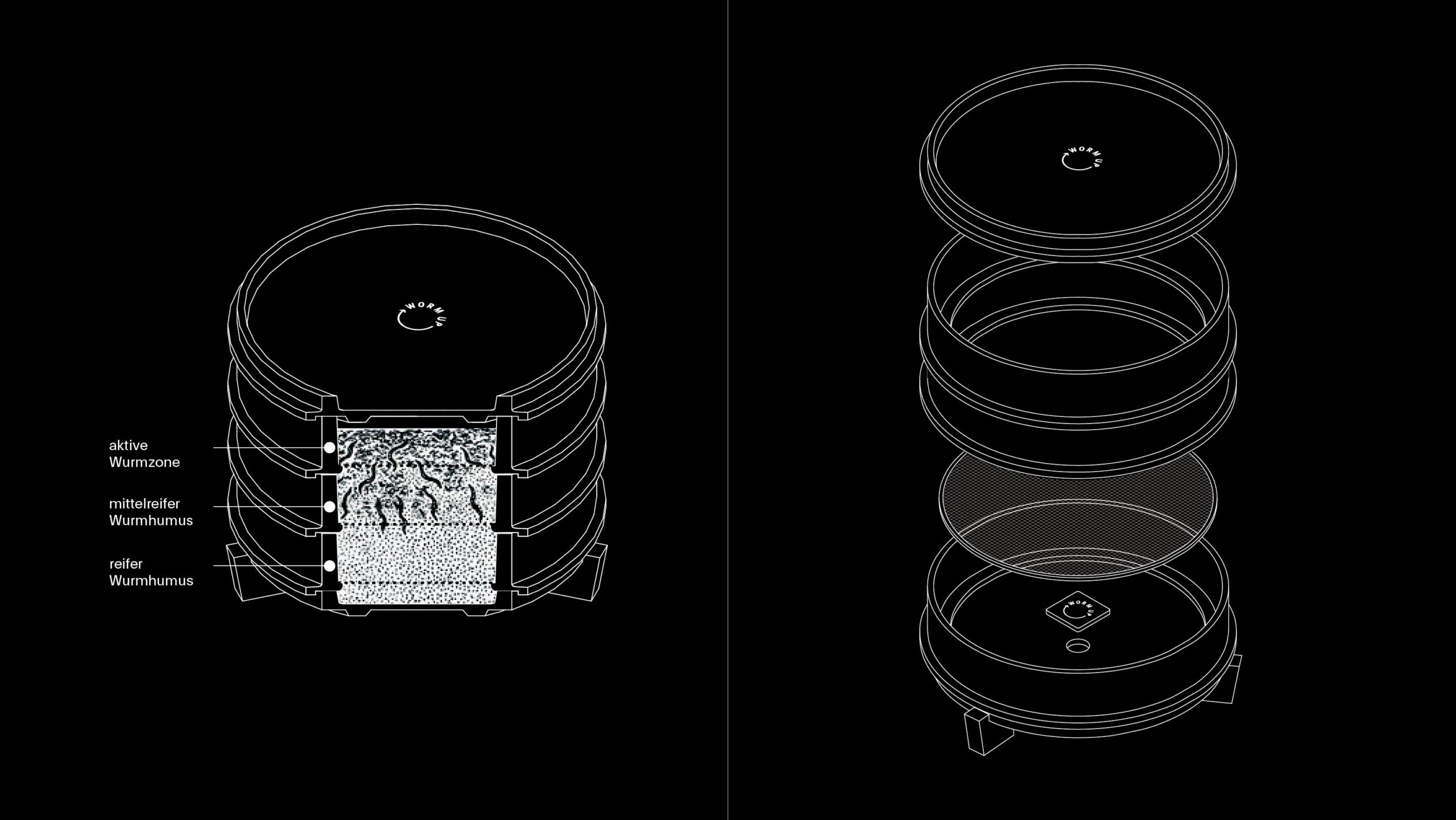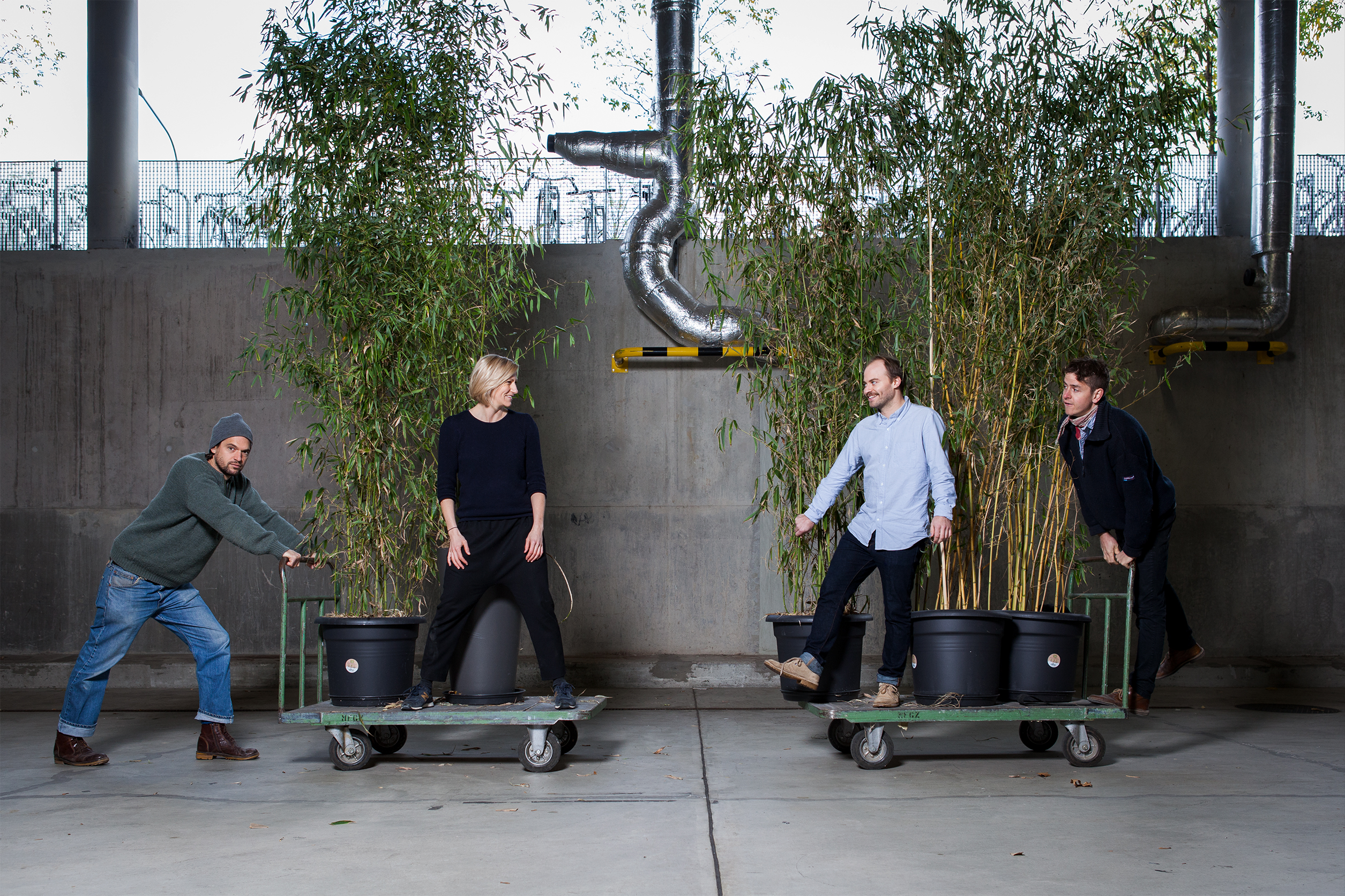Worms for your apartment
Giulia Bernardi • 03.05.2018
Every year over 500,000 tonnes of biogenic waste ends up in household rubbish throughout Switzerland. About one-third of this could easily be composted. This is the vision of WormUp: The start-up from Zurich has developed a compost system for our own four walls, in which worms break down the biological waste that occurs.
The founders Dennis Froesch and Nikolai Räber were inspired by the documentary «No Impact Man» (2009), which they watched in 2013 as part of a project week at the University of St. Gallen (HSG). In this project the New Yorker Colin Beavan tries not to generate any waste or use any energy for a year. This means he doesn’t use cars, lifts and cola from a can – and composts his biological waste with the help of worms.
Nikolai and Dennis were in agreement: It would be very difficult to live quite like Beavan, but it should be possible for every household to compost its own biological waste instead of throwing it in the dustbin. This was when WormUp was born. Together with the industrial designer Luiz Schumacher and environmental engineer Erich Fässler – who had already tested the worm composter on his balcony –, the boys developed the ‹WormUp HOME› product. A round recycling system made of fired clay, that consists of three levels, a base and a lid. Thanks to its space-saving format (height: 35 cm, diameter: 40 cm), it’s particularly suitable for urban apartments.
And this is how it works: ‹WormUp HOME› is always filled from the bottom to the top. When you start off, 500 grammes of worms – approximately 1,000 of them – and 2 kilogrammes of an enriched substrate with microorganisms are placed in the base. The biological waste is deposited on top of this. Microorganisms break down the waste, the worms suck it up and process it into nutrient-rich soil. As soon as the rubbish has been completely broken down, a grate can be pushed in and fresh vegetable/fruit waste added. Thanks to the grate, the worms can move up and down between the different levels. The compost can be harvested every two to four months. The emptied component is replaced at the top and the process starts again from the beginning.
Vegetable/fruit waste, but also coffee grounds or egg shells can be put into the worm composter. In addition, 30 to 50 percent of fibrous materials such as toilet paper rolls, packaging made of cardboard or woody flower stems can be added. This is how the relationship between carbon and nitrogen is regulated. «While for example fresh vegetable/fruit waste contains a lot of nitrogen, woody material is rich in carbon», says the environmental engineer Erich Fässler. «The worms need carbon to be able to break down the material that contains nitrogen. This is in principle the same as for humans: We need fibre to digest the food we have eaten.»
Every day the worms break down about half of their body weight: That’s about 0.25 gramme. Per week between 0.6 and 1.3 kilogramme can be decomposed with the ‹WormUp HOME›. The quantity depends on the conditions in the composter: Depending on what type of waste is added, the environment may be acid or alkaline. «Fruit tends to have more of an acid pH-value», says Erich. «This can for example be balanced out by adding alkaline egg shells. A pH-neutral environment is the optimum for the worms.» Although humans can help a bit, in principle the composter is a self-sustaining and self-regulating eco-system: If the population becomes too large, the worms no longer reproduce.
«Worldwide about 95 percent of all waste ends up in landfill sites. The organic materials produce methane when they break down. This is 25 times more harmful to the environment than carbon dioxide and accounts for approximately 3 percent of the greenhouse gases produced by humans»
Erich Fässler
However, the attention of the four young entrepreneurs was not only focussed on the biological and chemical decomposition process, but also on the design of ‹WormUp HOME›. In the final analysis they wanted to create a product, that is not only relatively cheap to produce, but also easy to use and satisfies the aesthetic requirements of its urban target group. Luiz Schumacher, who studied Industrial Design at Zurich University of the Arts (ZHdK), therefore designed several prototypes. The first consisted of three stackable containers made of plastic. After the initial trials, it became obvious that the material allows too little oxygen to circulate and is therefore not suitable – both from a functional and aesthetic perspective. Wood was also not very successful in the trials because it can easily become distorted with high levels of moisture. So finally Luiz tried clay: Although the material is slightly heavier than wood or plastic, once it has been fired, it keeps its shape. «Compromises were continually being made during production to take account of our manufacturers’ conditions», says Luiz. This is why for example the start-up decided on a round instead of a square shape: «Clay contracts when it dries. This change is easier to manage with round shapes.»
The four young entrepreneurs from left to right: Erich Fässler, Sarah Steiner, Nikolai Räber, Luiz Schumacher
543,000 tonnes of biogenic waste ends up in household rubbish in Switzerland every year. When filled in lorries, this represents a queue stretching from Basel to Chiasso. «One-third of it is avoidable through more conscious handling of groceries», believes Erich. «Another third could easily be composted.» This would mean that transport distances to dispose of the waste and the energy used for this could also be saved.
Biogenic waste is a also problem at a global level. «Worldwide about 95 percent of all waste ends up in landfill sites. The organic materials produce methane when they break down. This is 25 times more harmful to the environment than carbon dioxide and accounts for approximately 3 percent of the greenhouse gases produced by humans», states Erich. The «4 per 1000» initiative also argues along similar lines. It was launched in 2015 during the UN Climate Conference in Paris. This problem could be solved by composting 0.4 percent of biogenic waste every year. The life of methane is also about ten years shorter than that of carbon dioxide: A good opportunity to quickly slow down climate change.
Another advantage of composting: The fertiliser created is far more environmentally friendly than the alternatives that are produced industrially. «Artificial fertiliser is manufactured using a large amount of energy. Although it is absorbed quickly by plants, it makes them more susceptible to pests», says Erich. «Of course this is practical for companies, which would also like to sell pesticides as well as fertiliser.»
The use of organic fertiliser perhaps doesn’t achieve results as quickly as artificial fertiliser from an economic perspective, but it is the more sustainable version. By composting, the carbon is stabilised in the top soil and stored in the soil for a long time. This also enables depleted soil with little top soil to be revived. Top soil also regulates the water balance, through which the soil – and therefore the associated food production – is more able to compensate for fluctuations in climate.
Whether you now decide to use a worm composter or not: It’s definitely worth thinking about the subject. Because every change starts with small beginnings. Perhaps in our own four walls.
Photography: WormUp




